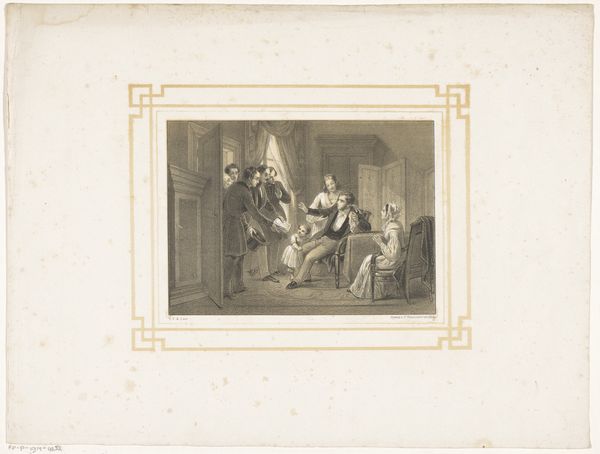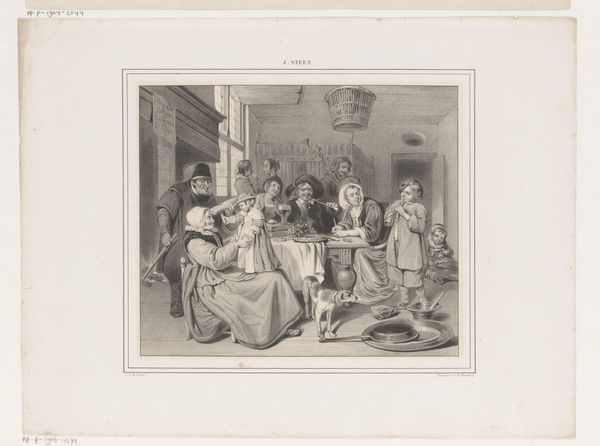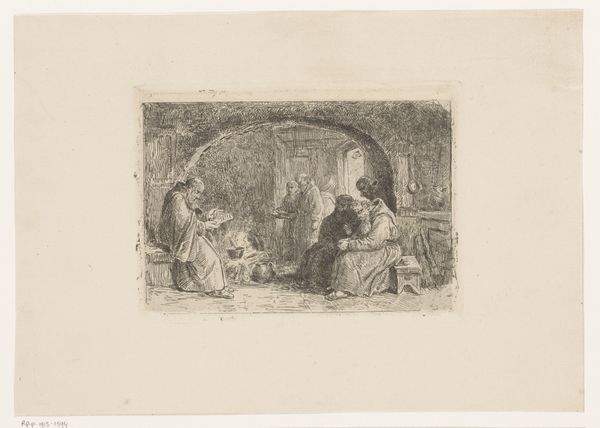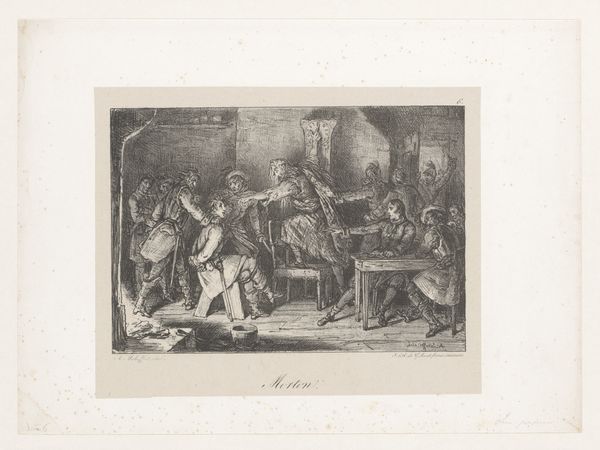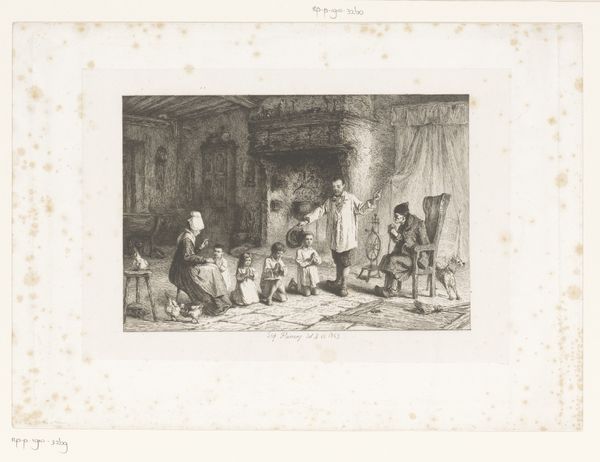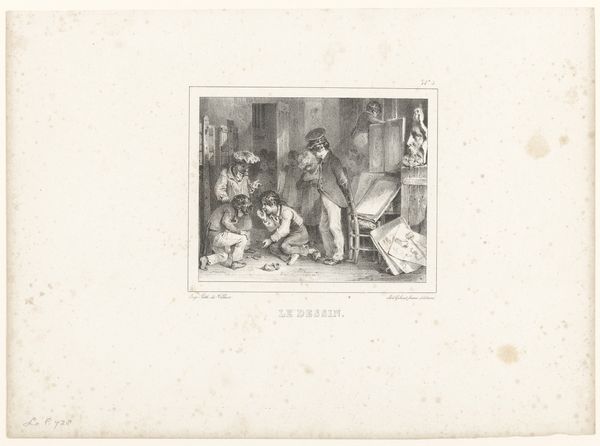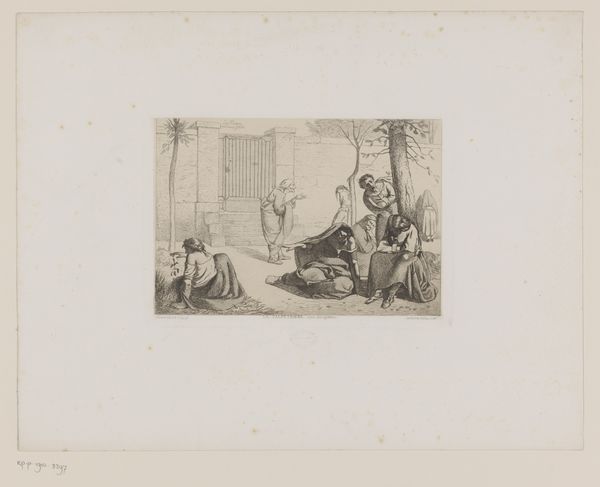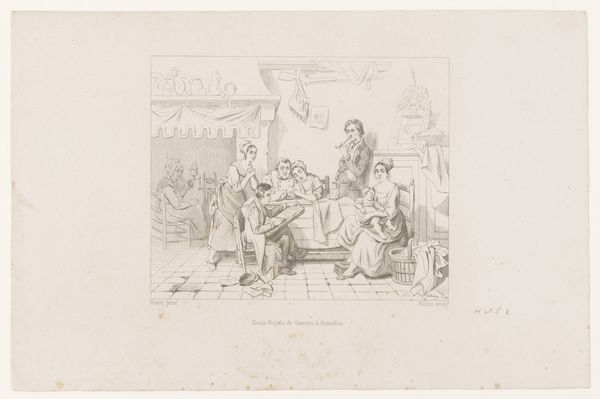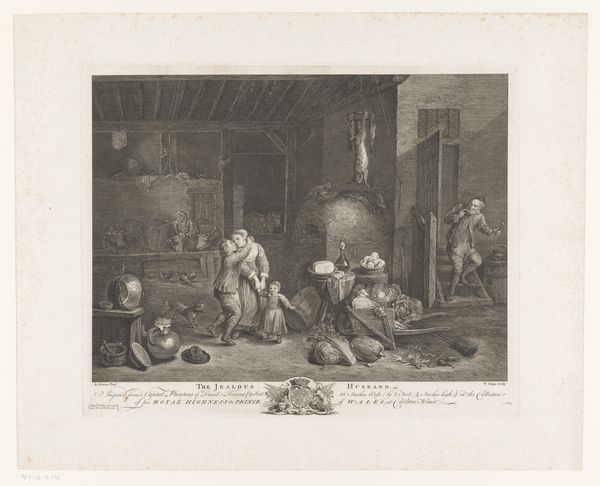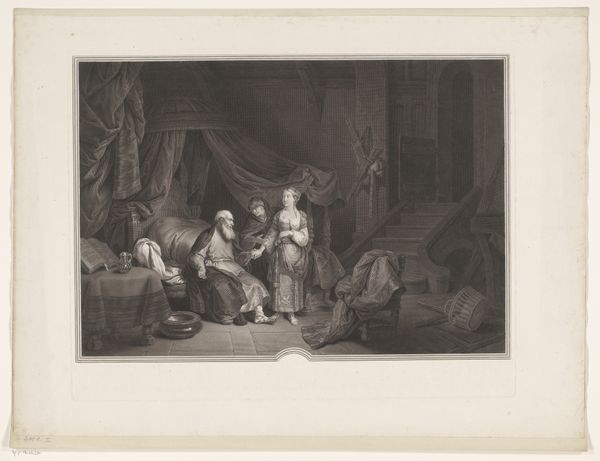
Fotoreproductie van een fresco in de Santa Maria Novella te Florence door Domenico Ghirlandaio, voorstellend de geboorte van Johannes de Doper c. 1875 - 1900
0:00
0:00
print, fresco, photography, gelatin-silver-print
#
narrative-art
# print
#
fresco
#
photography
#
gelatin-silver-print
#
history-painting
#
italian-renaissance
Dimensions: height 189 mm, width 248 mm
Copyright: Rijks Museum: Open Domain
Curator: Here we have a photographic reproduction of a fresco, titled "Fotoreproductie van een fresco in de Santa Maria Novella te Florence door Domenico Ghirlandaio, voorstellend de geboorte van Johannes de Doper." It was created circa 1875 to 1900, rendered as a gelatin silver print. Editor: It feels surprisingly serene, despite the apparent busyness of the scene. The monochromatic palette really unifies the composition. Curator: Indeed. If we consider the fresco itself, painted by Ghirlandaio during the Italian Renaissance, it uses spatial arrangements to articulate a social dynamic, placing particular emphasis on the architecture, costumes, and even the furniture to express wealth and status. Editor: And of course, to reinforce rigid social hierarchies. These elaborate depictions of childbirth were hardly celebrations of female agency. It's about securing patriarchal lineage and showcasing wealth via elaborate domestic displays, evidenced by the women bearing gifts of luxury fabrics. We need to critically assess how such scenes normalize women’s roles solely as domestic figures. Curator: I would argue, though, that Ghirlandaio’s technical prowess can’t be dismissed. The skillful use of perspective, for example, directs our gaze to the most significant figures while maintaining visual equilibrium across the picture plane. Note the orthogonals receding to a vanishing point, and how light delicately models the forms. Editor: While I appreciate that skill, those aesthetic choices are deliberately deployed to reinforce the status quo. Light and perspective become tools for elevating the ruling classes, deflecting from any deeper exploration of these women's interior lives or experiences. Also, the print medium invites us to reflect upon how reproducibility influences the dissemination of propaganda, aesthetic value, and ideology itself. How might the experience of the fresco change when it exists within a photographic medium? Curator: The very act of reproduction allows it to enter new spaces of visibility. And for contemporary viewers, this image prompts a reassessment of Renaissance artistry itself—encouraging dialogues regarding art history and reproduction theory in relation to the politics and cultural biases imbedded in the past. Editor: Absolutely. Examining these artworks allows us to uncover histories not visible on the surface and acknowledge the complexity behind art’s many agendas.
Comments
No comments
Be the first to comment and join the conversation on the ultimate creative platform.
